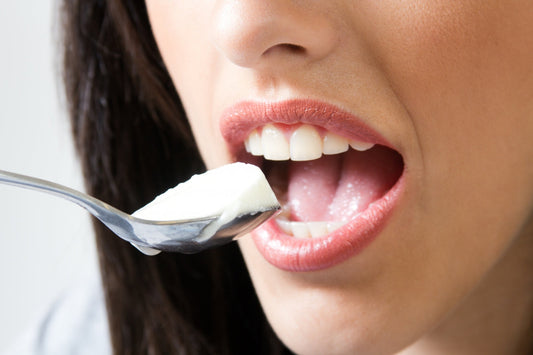Understanding Gum Recession: Causes, Symptoms, and Risks

Understanding Gum Recession: Causes, Symptoms, and Risks - Enzim Singapore
Gum recession is a common dental issue that affects millions of people worldwide. It occurs when the gum tissue surrounding the teeth wears away or pulls back, exposing more of the tooth or even its root. This can lead to increased sensitivity, discomfort, and a higher risk of tooth decay. Understanding the causes, symptoms, and risks of gum recession is essential for maintaining good oral health and preventing further complications.
What Causes Gum Recession?
Several factors contribute to gum recession, ranging from poor oral hygiene habits to genetic predisposition. Some of the most common causes include:
1. Aggressive Brushing
Brushing too hard or using a hard-bristled toothbrush can wear down the enamel and gum tissue over time, leading to recession. It’s crucial to use a soft-bristled toothbrush and gentle, circular motions to clean your teeth effectively without causing damage.
2. Poor Oral Hygiene
Inadequate brushing and flossing can lead to plaque buildup, which can harden into tartar. Tartar pushes the gums away from the teeth, creating pockets that harbour bacteria and cause gum disease, one of the leading causes of gum recession.
3. Periodontal Disease
Gum disease, or periodontitis, is a severe infection that damages the soft tissue and bone supporting the teeth. If left untreated, it can result in gum recession and even tooth loss.
4. Smoking and Tobacco Use
Smoking and using other tobacco products increase the risk of gum disease by reducing blood flow to the gums and weakening the immune system, making it harder for the body to fight infections.
5. Hormonal Changes
Hormonal fluctuations, particularly in women during puberty, pregnancy, or menopause, can make gums more sensitive and prone to recession.
6. Teeth Grinding (Bruxism)
Clenching or grinding your teeth puts excessive pressure on the gums, which can cause them to recede over time. Wearing a mouthguard at night can help protect your teeth and gums.
7. Misaligned Teeth or Bite Issues
Uneven pressure on certain teeth due to misalignment can lead to excessive wear on the gums, increasing the risk of recession.
Symptoms of Gum Recession
Recognising the early signs of gum recession is crucial for seeking timely treatment. Common symptoms include:
-
Tooth Sensitivity: Increased sensitivity to hot, cold, and sweet foods due to exposed tooth roots.
-
Longer-Looking Teeth: As the gums pull back, teeth may appear longer than usual.
-
Bleeding Gums: Frequent bleeding, especially when brushing or flossing, can indicate gum recession and underlying gum disease.
-
Bad Breath (Halitosis): Bacteria build-up in gum pockets can cause persistent bad breath.
-
Loose Teeth: Advanced gum recession can lead to weakened support, making teeth feel loose or shifting their position.
The Risks of Untreated Gum Recession
Ignoring gum recession can have serious consequences for your oral and overall health. Some of the potential risks include:
-
Increased Tooth Decay: Exposed roots are more susceptible to decay since they lack the protective enamel that covers the crown of the tooth.
-
Gum Infections: Bacteria can accumulate in the receding areas, leading to infections and worsening periodontal disease.
-
Tooth Loss: In severe cases, gum recession can weaken the support around teeth, causing them to loosen and eventually fall out.
-
Bone Loss: Advanced gum disease can lead to jawbone deterioration, affecting the overall structure of the mouth.
Preventing and Managing Gum Recession
Preventing gum recession starts with good oral hygiene and healthy lifestyle choices. Here are some effective ways to protect your gums:
1. Use the Right Toothpaste
Choosing a gentle yet effective toothpaste like Enzim Toothpaste can help maintain healthy gums. Enzim Toothpaste contains active enzymes that support oral hygiene by reducing plaque build-up and protecting gum tissue without causing irritation.
2. Brush and Floss Properly
Use a soft-bristled toothbrush and fluoride toothpaste, and brush in gentle, circular motions. Floss daily to remove plaque and food particles from between the teeth and along the gum line.
3. Regular Dental Check-Ups
Seeing your dentist at least twice a year for professional cleanings and check-ups can help detect and address gum recession in its early stages.
4. Avoid Tobacco Products
Quitting smoking and avoiding tobacco products will significantly improve your gum health and reduce the risk of gum disease.
5. Eat a Balanced Diet
A diet rich in vitamins and minerals, particularly vitamin C and calcium, supports healthy gums and overall oral health.
6. Use a Mouthguard if Necessary
If you grind your teeth at night, wearing a custom-fitted mouthguard can help protect your teeth and gums from excessive pressure.
Conclusion
Gum recession is a serious oral health issue that should not be ignored. By understanding its causes, recognising its symptoms, and taking proactive steps to prevent and manage it, you can maintain healthy gums and protect your smile for years to come. Incorporating Enzim Toothpaste into your daily oral care routine can be an excellent way to support gum health and reduce the risk of gum recession. If you notice any signs of receding gums, consult your dentist for professional advice and appropriate treatment options.



